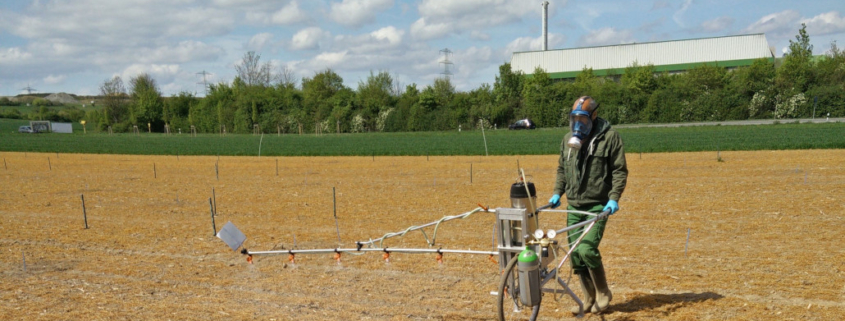Report published on adaptations for a harmonized field-testing procedure and risk assessment of earthworms
A project funded by the German Environment Agency was performed to provide scientifically robust and practical information on the variability of the endpoints assessed in earthworm field studies, the statistical significance of the results and the level of the statistically detectable effects of the chemicals tested with the aim of developing suggestions for improving the test design.
Best-practice studies revealed a low power to detect differences between control and test chemical treatment plots in earthworm field studies. An adapted test design should contain an option to perform regression (ECx) analyses, which have been suggested as an alternative to the currently performed threshold (NOEC) approach. A pilot field study was performed according to a newly developed combined NOEC- and ECx-test design with the test substance carbendazim. The ECx design led to more robust conclusions for environmental risk assessment. The calculation of effect thresholds (NOEC/LOEC) should be conducted with the most powerful multiple test procedure for the given data prerequisites. If applicable to the data, the closure principle computational approach test (CPCAT) is the preferred option. The evaluation and interpretation of the data at plot (pooled samples of 1 m2 in total used as replicates) and sub-plot level (single samples as replicates of 0.25 m2) should be requested. According to the experiences made during the performance of the pilot field study and the results of the statistical analyses, a draft OECD test guideline was developed.
For further information, see the project report:
Römbke, J., Förster, B., Jänsch, S., Kaiser, F., Scheffczyk, A., Roß-Nickoll, M., Daniels, B., Ottermanns, R., Scholz-Starke, B. (2020). Necessary adaptations for a harmonized field-testing procedure and risk assessment of earthworms (terrestrial). UBA-Texte 193/2020.
For additional new publications, see ECT’s publication list.

 ECT Oekotoxikologie GmbH
ECT Oekotoxikologie GmbH D. Leib
D. Leib K. Duis
K. Duis